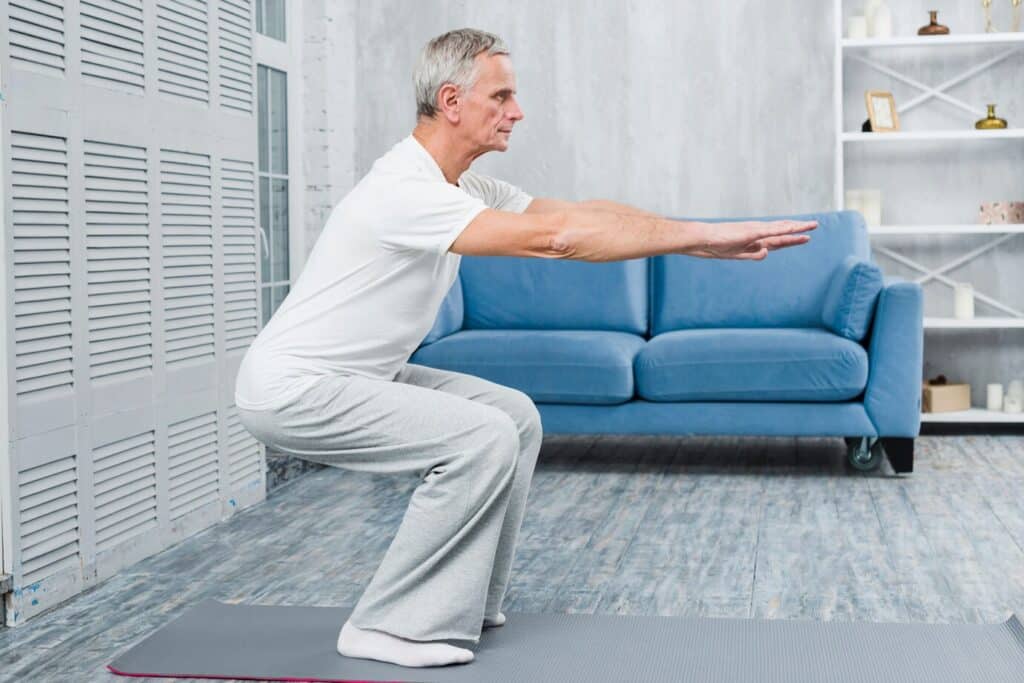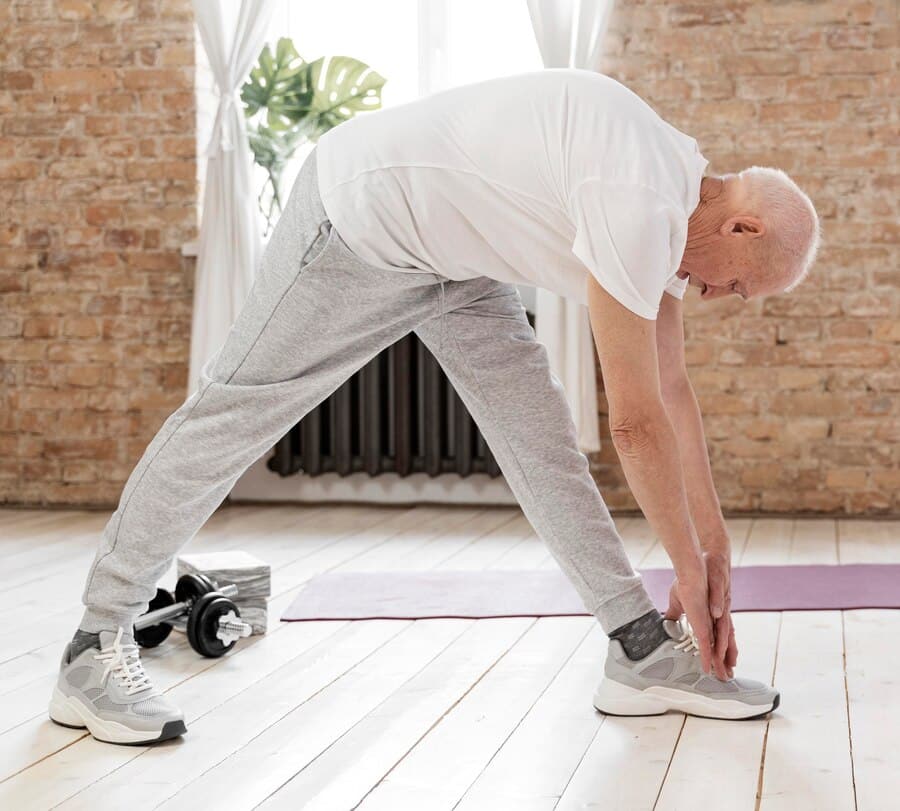Starting a consistent walking workout routine can be one of the most effective and accessible ways for seniors to improve their health, mobility, and mood. Whether you’re just getting started or looking to take your current walking routine to the next level, this guide will provide you with practical strategies to help you stay safe, motivated, and energized along the way.
In this comprehensive guide, we’ll walk you through the essential components of a successful walking workout plan—from choosing the right footwear to creating a routine that fits your lifestyle. You’ll also learn how to track your progress, make adjustments based on your body’s signals, and stay on track with your goals. Whether you’re seeking a walking workout at home or aiming for a walking workout for weight loss, the following tips are tailored to your needs.
To learn more about senior living programs that support active lifestyles, visit Westmont Living.
Assess Your Current Fitness Level
Before beginning any walking workout for beginners, it’s crucial to understand your current fitness baseline. Consider talking to a healthcare provider to review your health conditions and mobility. Simple exercises to assess your range of motion, flexibility, and endurance will give you a strong starting point.
For additional guidance on staying healthy and energized, explore this post on nutrition for older adults.
Choose the Right Footwear
Shoes play a vital role in your walking workout experience. Ill-fitting or unsupportive footwear can lead to discomfort or injury, especially for seniors.
Proper Fit Matters
Take the time to measure both feet and choose a shoe that matches your foot shape. For walking, a snug but not tight fit is ideal.
Cushioning and Support
Look for memory foam or gel insoles that absorb shock and provide proper arch support. This reduces joint strain and improves posture while walking.
Breathable Materials
Choose breathable, moisture-wicking fabrics like mesh to keep your feet cool and dry. Learn how staying physically active also contributes to mobility and overall wellness.

Set Realistic Goals
Setting clear and manageable goals is essential to keeping your walking workout plan consistent and purposeful.
Assess Current Fitness Level
If you’re new to walking, start by tracking how far and how long you can walk comfortably. From there, set gradual milestones.
Define Specific Objectives
You might aim to walk for 10 minutes a day this week, then increase to 15 minutes next week. Focused goals help improve consistency.
Monitor Progress Regularly
Use a fitness tracker or journal to log your walks. For inspiration, see how 150 minutes of weekly walking can improve senior health in this exercise guide.
Plan Your Walking Route
A safe and enjoyable route can make or break your walking workout experience. Choose well-lit areas with level ground and low traffic. Local parks, sidewalks, or even walking indoors at a mall can be great options.
Let someone know your route if you’re walking alone, and consider a walking buddy for extra motivation and safety.

Warm-Up
Establish a Walking Schedule
Consistency leads to results. Aim for at least 3 to 5 days per week and build your walking workout for weight loss gradually. Choose the time of day you feel most energized—morning, midday, or evening.
Adding a walking partner, such as a friend or family member, can keep you motivated and make your walks more enjoyable.
Warm Up and Cool Down
Before starting your walk, stretch your muscles with light movements like arm circles and leg swings. Afterward, cool down by walking slowly for 5 minutes and stretching your legs to prevent stiffness.
This simple habit improves flexibility and reduces the risk of injury.
Incorporate Variations and Intervals
A static routine may lead to plateaus or boredom. Try adding variations to your walking workout at home or outside to keep things interesting.
- Speed Intervals – Alternate 1 minute of brisk walking with 2 minutes at a slower pace.
- Incline Walking – Add hills or stairs to strengthen muscles.
- Walking with Weights – Use light dumbbells or wrist weights.
- Lateral Steps or Backward Walking – Enhance balance and coordination.
These simple changes can increase calorie burn and improve cardiovascular health. Check out the CDC’s physical activity guidelines for more tips.
Stay Hydrated
Hydration is key to energy and safety during any walking workout plan. Drink a glass of water about 30–60 minutes before your walk, and sip every 20 minutes during longer walks. Rehydrate afterward with another glass.
If walking outdoors, bring a refillable water bottle to stay prepared
Listen to Your Body
Pushing too hard can do more harm than good. If you experience sharp pain, dizziness, or shortness of breath, stop and rest. Adjust the intensity of your walking workout for beginners to your current energy levels.
Use your body’s signals as a guide to increase, maintain, or reduce your pace. Rest days are just as important as active days.
Track Your Progress
Use a fitness journal, phone app, or even a printed calendar to record your steps, distance, or time. Seeing your achievements on paper builds confidence and motivation.
When you hit a goal—celebrate it! Small victories lead to big changes over time. Celebrate consistency just as much as distance.

Try a Walking Workout at Home
For days when you can’t go outside, a walking workout at home is a great alternative. You can walk in place while watching TV, follow along with a YouTube walking video, or use a treadmill.
A few helpful YouTube channels include:
These options help you stay consistent regardless of the weather or schedule.
Final Steps to a Stronger You – Start Today!
Creating a walking workout routine doesn’t require fancy equipment or a gym membership—it just takes a pair of comfortable shoes, a plan, and the willingness to start. Whether you’re aiming for weight loss, increased energy, or mental clarity, walking can help you get there—one step at a time.
If you’re looking for a supportive and active community that promotes fitness and overall wellness, contact Westmont Living at 858-456-1233 or visit https://westmontliving.com/contact/. Start your journey today and inspire others to walk beside you.
How Do The Costs Of Moving Into A Quality Senior Care Community Compare With The Costs Of Staying At Home?Compare The Costs of Senior Living vs Staying at Home
Frequently Asked Questions
What is the 12 3 30 walking method?
The 12 3 30 walking method is a treadmill workout where you set the incline to 12%, the speed to 3 miles per hour, and walk for 30 minutes. It became popular for being a simple yet effective way to burn calories and build endurance. Many people like it because it doesn’t require running, making it gentler on the joints. Consistency is key, and it can be a great option for those looking to improve fitness through walking.
How much walking a day is good exercise?
Most health experts recommend at least 30 minutes of brisk walking a day, which equals about 150 minutes per week. For additional benefits like weight loss or improved endurance, aiming for 45–60 minutes can be even more effective. The amount also depends on your fitness goals, such as heart health, muscle tone, or calorie burn. What matters most is building a habit of daily movement, even if broken into shorter walks.
Do walking workouts really work?
Yes, walking workouts are highly effective for improving cardiovascular health, building stamina, and supporting weight management. When done at a steady pace or with added intensity (like inclines or intervals), they can burn calories comparable to other moderate exercises. Walking also reduces stress and boosts mood, making it beneficial for both physical and mental health. The key is staying consistent and gradually increasing the challenge over time.
What is the best walking strategy?
The best walking strategy depends on your goals, but a balanced plan includes a mix of pace, duration, and terrain. Start with steady walks to build endurance, then add intervals of faster walking or hill climbs for strength and calorie burn. Good posture, proper shoes, and staying hydrated also enhance results. Consistency, combined with gradually increasing intensity, ensures long-term benefits.
What is the 6-4-2 method?
The 6-4-2 method is another structured walking workout designed to vary intensity for better results. It often means walking briskly for 6 minutes, slowing to a moderate pace for 4 minutes, and then finishing with 2 minutes of fast walking or jogging. This cycle helps improve stamina, cardiovascular fitness, and calorie burn. It’s a flexible routine that can be repeated multiple times depending on your fitness level.








